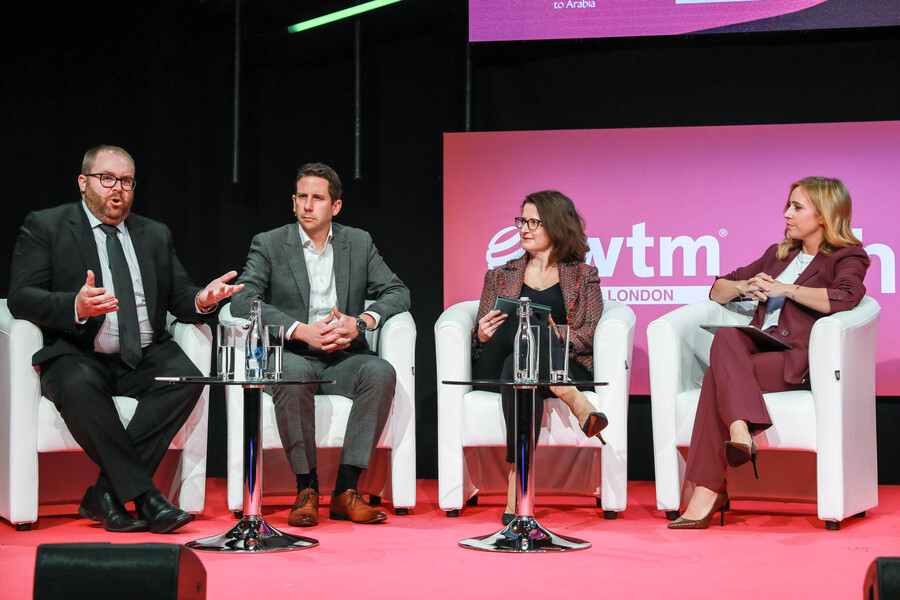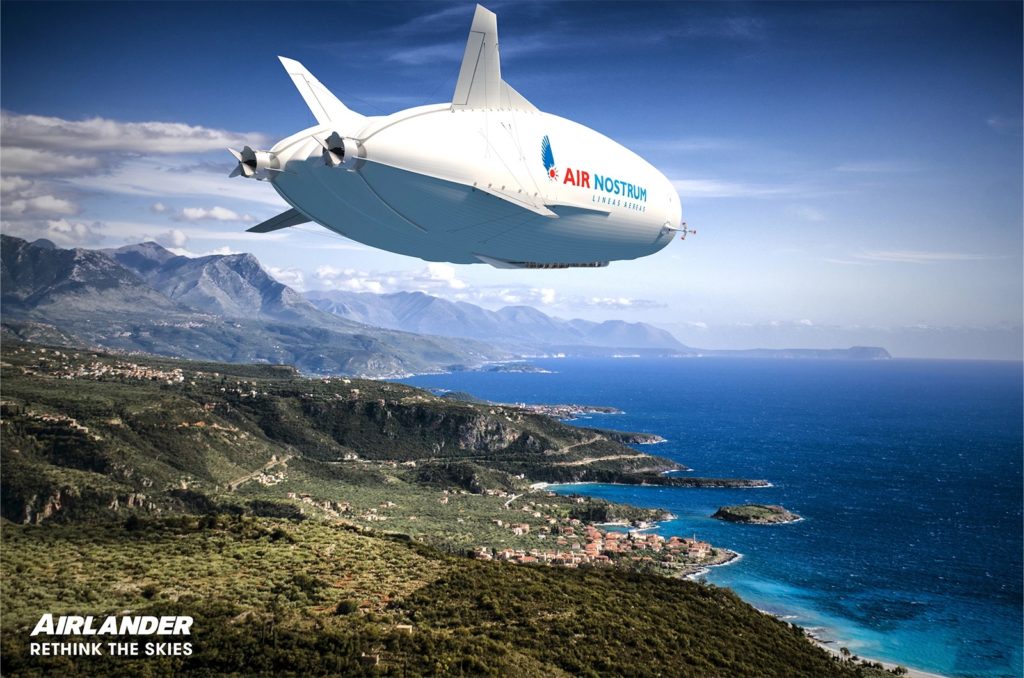Aviation panel says SAF will do the heavy lifting on the road to net zero
Share
A World Travel Market (WTM) ‘Future of Travel’ panel has concluded that Sustainable Aviation Fuel (SAF), rather than new technology, needs to do most of the heavy lifting in aviation’s road to net zero.

Chaired by CNN Reporter Anna Stewart, the panel in London, which took place on November 7th, included Haldane Dodd, Executive Director of the Air Transport Group (ATAG), Kata Cserep, Global Managing Director Aviation at ICF and Tom Grundy, CEO of hydrogen airship company Hybrid Air Vehicles.
The commercial airline fleet currently stands at 23,000 active aircraft (source CH Aviation), and those aircraft will in some cases be flying for decades to come.
As a result, after being asked if we’d see a science fiction style transformation in air travel, ATAGs Haldane Dodd started the session by saying that travel is “not going to look all that much different, as disappointing an answer as that might be. I think we’re probably going to experience, from a visual perspective, a fairly similar process.
Changes in the energy system, not the visual system
“But the question will be, how is it powered? And I think that’s where a lot of the change will come from. Certainly in the area that we work in, we have been trying to reduce the CO2 emissions from air transport.” According to Dodd:
“There will be a big change in the energy system of aviation much more than the visual system.”
When asked by moderator Anna Stewart why SAF was still such a small part of the aviation jet fuel mix, Kata Cserep replied with “money.” This comes as SAF costs anywhere between 2-5x compared to normal kerosene based fuel.
Kata Cserep then outlined the scale of the task that the industry faces in moving to net zero:
“Clearly airlines are under increasing consumer pressure, corporate buyer pressure, societal pressure to seem to be doing something but the desire to do something is not sufficient.
“Somebody has to invest hundreds of millions of dollars in building a refinery, and they need some certainty that once they’ve built that refinery, somebody’s actually going to pay their price that will allow them to make it.” As a result, Cserep emphasized the role Government incentives can play in promoting the adoption of SAF:
“There’s again a very good reason why 90 plus percent of the SAF in use today is in California. That’s because there are incentives and credits in place that make it economically viable for this to be produced.”
However, Haldane Dodd was optimistic that production and use would scale up quickly, pointing out that forward orders of SAF increased hugely even during the height of the pandemic, when airlines had to deal with unprecedented economic pressure.
He also mentioned that there are a range of airlines that are aiming for 10% SAF use by 2030.
This comes as Christoph Wolff from the Clean Freight Centre and formerly from the Clean Skies of Tomorrow Coalition, estimated in a recent interview with SimpliFlying’s Shashank Nigam that so-called ‘E-Fuels” would be price competitive within the next twenty years.
Silicon Valley thinking doesn’t always work for aviation
Dodd told the audience that electric and hydrogen aircraft would probably be in service on shorter, limited routes by the end of the decade.
However, he also said that Silicon Valley thinking, where you invent tech to solve a problem, isn’t always appropriate for aviation:
“You are finding people coming in from Silicon Valley, but coming with a tech focused agenda or a tech focused approach to the way you do things. If you are building an app or if you’re building an internet platform, it’s very trial and error, ‘we’ll just throw it out there and see what happens.’”
But with aviation, “we have to be very careful about the way we approach things” because of the industry emphasis on safety and the regulatory environment.

Kata Cserep agreed saying, “there is a disconnect between what is possible technology wise between what the regulatory environment is. And absolutely right, it is quite rightly a highly regulated industry.”
However, Cserep also questioned the commercial fundamentals of some tech solutions:
“Often, most importantly, the commercials don’t work and I think so many people get so over excited about the possibility of doing something that is very cool, looks sexy on a brochure.”
But – “these new technologies often keep incurring a huge amount of R&D for which needs to be reclaimed. Then there is the actual manufacturing and then on a daily basis, you need to have enough of a customer base who actually wants to fly this.
“And I think often that’s where these fall down. Once you start putting in real money and having to answer those difficult investment questions, that’s often where stuff gets real and things tend to fizzle a little bit.”
‘Airlander’ hydrogen airships in service by 2026

Hybrid Air Vehicles aims to have their “Airlander” hydrogen powered airships flying for the company’s first customer, Spain’s Air Nostrum, by 2026.
As a result, panellist and Hybrid Air Vehicles CEO Tom Grundy was able to talk about the challenges of developing new aviation technology and aircraft. The company had been working towards the production of the Airlander since 2007, and has taken care to bring the regulators along at every step.
Grundy said that his airships will offer airlines flexibility, in allowing them to become zero emissions replacements for a lot of regional jets. He also held out the potential for them to be used for cargo operations.
For example, the company is working with Highlands and Islands Airports in Scotland to see how the Airlander Airship can replace regional aircraft as a passenger connectivity and freight solution in the region.
Finally, Tom Grundy told the audience that hydrogen has a lot of potential as a zero carbon fuel for the future, reminding them that:
“We’re in an energy transition here and not just in aviation, not just transport, but in our whole society.”
That transition according to Grundy could in turn spur the adoption of alternative power sources like hydrogen.


